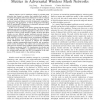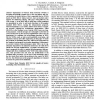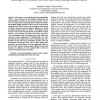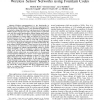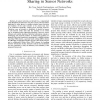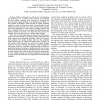SECON
2008
IEEE
14 years 6 months ago
2008
IEEE
—Recent work in multicast routing for wireless mesh networks has focused on metrics that estimate link quality to maximize throughput. Nodes must collaborate in order to compute ...
SECON
2008
IEEE
14 years 6 months ago
2008
IEEE
— We address the problem of congestion control in multi-radio, multi-channel, wireless mesh networks. Compared to its single radio counterpart for which solutions exist, this pro...
SECON
2008
IEEE
14 years 6 months ago
2008
IEEE
—Deployment of Wireless Mesh Networks (WMNs) is becoming increasingly popular due to the low-impact and lowcost features of wireless devices. This is especially true for WMNs bas...
SECON
2008
IEEE
14 years 6 months ago
2008
IEEE
—Traditional rate adaptation solutions for IEEE 802.11 wireless networks perform poorly in congested networks. Measurement studies show that congestion in a wireless network lead...
SECON
2008
IEEE
14 years 6 months ago
2008
IEEE
—In this paper, we present Black Burst Synchronization (BBS)1 , a novel protocol for decentralized network-wide tick synchronization in wireless ad hoc networks, located at MAC l...
SECON
2008
IEEE
14 years 6 months ago
2008
IEEE
—Many sensing systems remotely monitor/measure an environment at several sites, and then report these observations to a central site. We propose and investigate several practical...
SECON
2008
IEEE
14 years 6 months ago
2008
IEEE
—Wireless reprogramming is a key functionality in Wireless Sensor Networks (WSNs). In fact, the requirements for the network may change in time, or new parameters might have to b...
SECON
2008
IEEE
14 years 6 months ago
2008
IEEE
—In sensor networks, an intruder (i.e., compromised node) identified and isolated in one place can be relocated and/or duplicated to other places to continue attacks; hence, det...
SECON
2008
IEEE
14 years 6 months ago
2008
IEEE
—Traffic routing plays a critical role in determining the performance of a wireless mesh network. To investigate the best solution, existing work proposes to formulate the mesh ...
SECON
2008
IEEE
14 years 6 months ago
2008
IEEE
— In an effort to better understand connectivity and capacity in wireless networks, the log-normal shadowing radio propagation model is used to capture radio irregularities and o...
